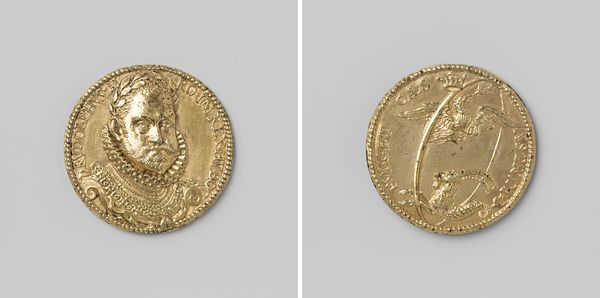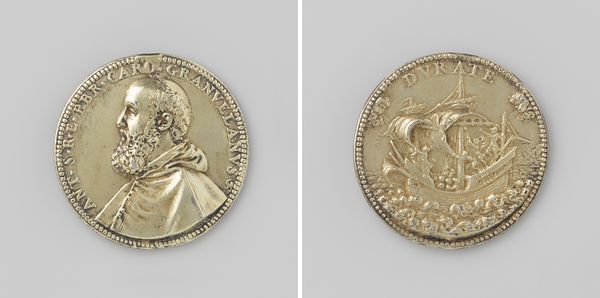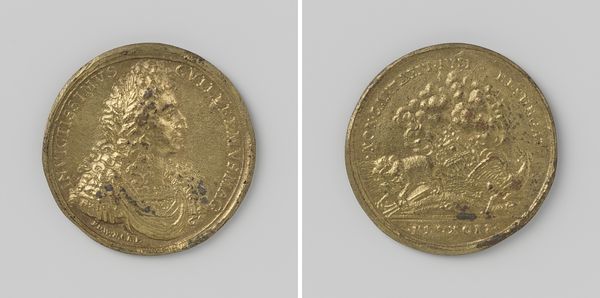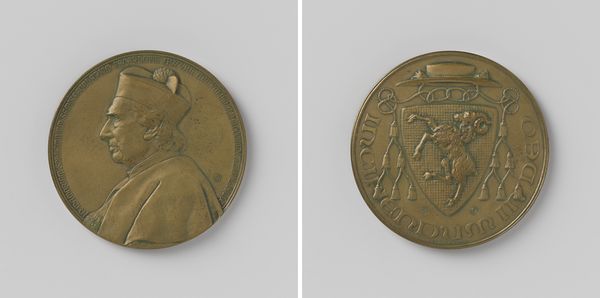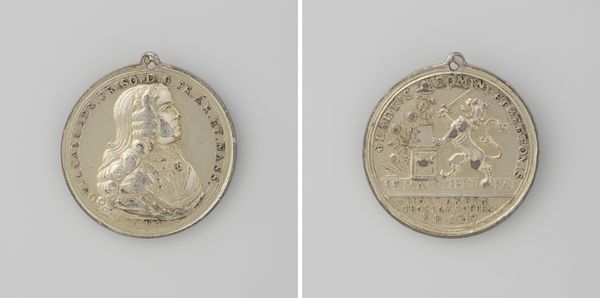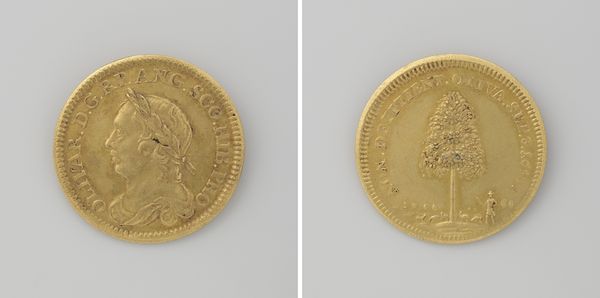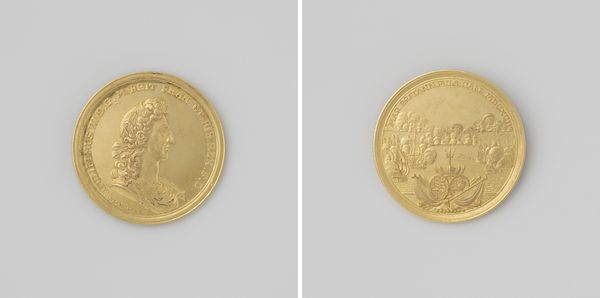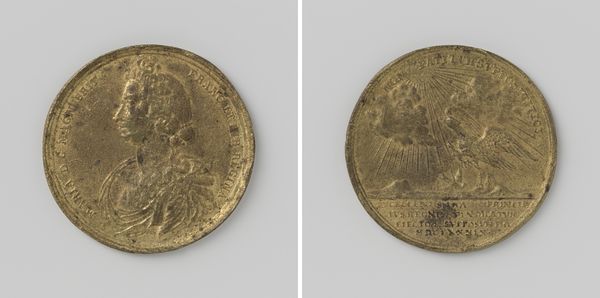
carving, metal, relief, bronze, sculpture, engraving
#
portrait
#
medal
#
carving
#
baroque
#
metal
#
sculpture
#
relief
#
bronze
#
11_renaissance
#
sculpture
#
history-painting
#
engraving
Dimensions: diameter 3 cm, weight 10.54 gr
Copyright: Rijks Museum: Open Domain
Curator: This piece, dating from 1687, is a bronze relief crafted by Georg Hautsch. It's titled "The Coronation of Joseph I as King of Hungary in Pressburg". Editor: Okay, my immediate thought? Concentric power. You've got these inscriptions that encircle a crowned heraldic crest, the other side containing the profiled relief of the young royal... Feels like one is trapped within a hall of mirrors of status, duty, expectations… kinda suffocating, really. Curator: It speaks to the public role of monarchs, particularly the Hapsburgs at this point in history. Hautsch’s decision to cast the event of the coronation in relief implies the need to solidify and immortalize it. The object becomes a statement, legitimizing Joseph's reign at a time when succession might not have been as secure. Medals such as these, handed out after a coronation, became like press releases, visual testaments designed to propagate power and inspire the right reaction within court. Editor: So propaganda, but tiny? Is that fair? And you see the subject: those youthful features contrasted against a weight of meaning on the flip side with that ornate crest, crown practically levitating... You feel the disparity of the individual against his inherited, performed, public image. Like he's got a very fancy gilded cage. The relief's flatness, too, it enhances this sense of stagedness for me... Curator: Exactly! That’s the core of the visual language then deployed to buttress these figures of authority, that artifice. This flatness reflects a broader move at the time in art, towards cleaner and more accessible design. We want more and more people to have faith in political and religious leadership, particularly within Central Europe during the Baroque. Editor: There is such tension here…a tension perhaps lost to anyone viewing without historical understanding. Without this, the medal itself reads quite like…well…bling? This little roundabout to nowhere; it does capture that strange paradox of those born to power: inheriting this weight of tradition alongside unimaginable luxury. I’m definitely sitting with that contrast. It's heavy. Curator: Well, I'm glad to hear that it makes such an impression. Understanding art’s position in history only adds depth to even the smallest medal! Editor: Absolutely, revealing stories that reverberate even now. Makes me see my pocket change a little differently, I have to admit.
Comments
No comments
Be the first to comment and join the conversation on the ultimate creative platform.
